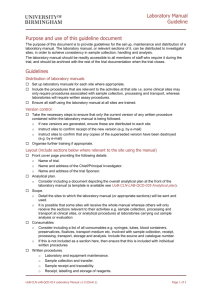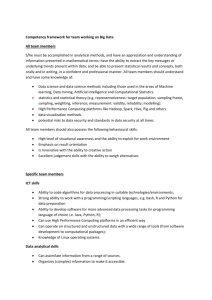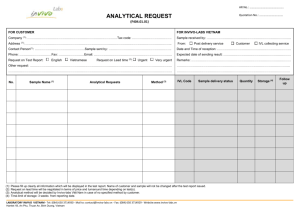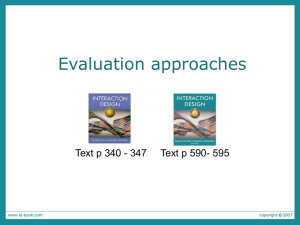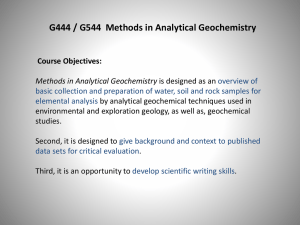Radiological Analytical Methods Expert Workshop with the U.S.
advertisement
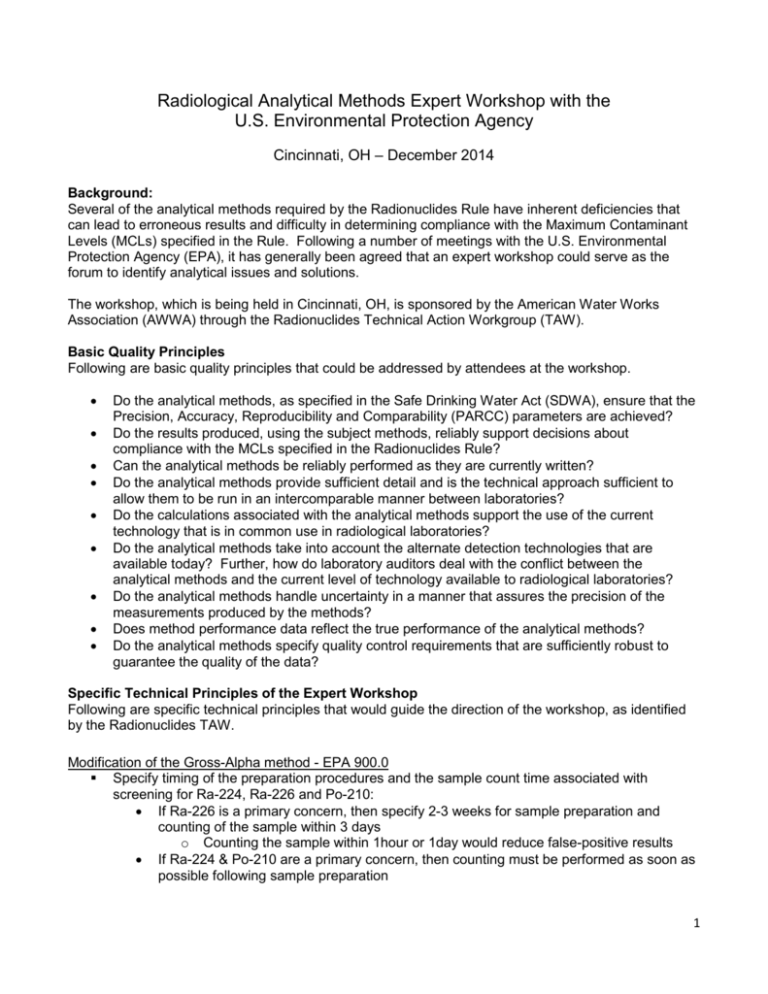
Radiological Analytical Methods Expert Workshop with the U.S. Environmental Protection Agency Cincinnati, OH – December 2014 Background: Several of the analytical methods required by the Radionuclides Rule have inherent deficiencies that can lead to erroneous results and difficulty in determining compliance with the Maximum Contaminant Levels (MCLs) specified in the Rule. Following a number of meetings with the U.S. Environmental Protection Agency (EPA), it has generally been agreed that an expert workshop could serve as the forum to identify analytical issues and solutions. The workshop, which is being held in Cincinnati, OH, is sponsored by the American Water Works Association (AWWA) through the Radionuclides Technical Action Workgroup (TAW). Basic Quality Principles Following are basic quality principles that could be addressed by attendees at the workshop. Do the analytical methods, as specified in the Safe Drinking Water Act (SDWA), ensure that the Precision, Accuracy, Reproducibility and Comparability (PARCC) parameters are achieved? Do the results produced, using the subject methods, reliably support decisions about compliance with the MCLs specified in the Radionuclides Rule? Can the analytical methods be reliably performed as they are currently written? Do the analytical methods provide sufficient detail and is the technical approach sufficient to allow them to be run in an intercomparable manner between laboratories? Do the calculations associated with the analytical methods support the use of the current technology that is in common use in radiological laboratories? Do the analytical methods take into account the alternate detection technologies that are available today? Further, how do laboratory auditors deal with the conflict between the analytical methods and the current level of technology available to radiological laboratories? Do the analytical methods handle uncertainty in a manner that assures the precision of the measurements produced by the methods? Does method performance data reflect the true performance of the analytical methods? Do the analytical methods specify quality control requirements that are sufficiently robust to guarantee the quality of the data? Specific Technical Principles of the Expert Workshop Following are specific technical principles that would guide the direction of the workshop, as identified by the Radionuclides TAW. Modification of the Gross-Alpha method - EPA 900.0 Specify timing of the preparation procedures and the sample count time associated with screening for Ra-224, Ra-226 and Po-210: If Ra-226 is a primary concern, then specify 2-3 weeks for sample preparation and counting of the sample within 3 days o Counting the sample within 1hour or 1day would reduce false-positive results If Ra-224 & Po-210 are a primary concern, then counting must be performed as soon as possible following sample preparation 1 Establish a uniform matrix for solids used for calibration procedures and PT standards for gross alpha and gross beta Ensure that gross beta PT samples and calibration procedures are based upon the same reference nuclide (Cs137, Sr90) Reconcile inconsistency in calibration standards between Americium and Thorium for gross alpha analyses in order to be consistent with the CFR Specify rules and calculations for simultaneous measurements of gross alpha and gross beta (i.e. crosstalk correction) The Reporting Detection Limit (RDL) is very close to the action limit for radium. As a result, the potential exists for a high rate of false negatives /false positives due to counting uncertainty. Provide specific guidance about the flaming of planchets Provide specific guidance about the weighing conditions for planchets Modification of the Radium-228 method - EPA 904 There is high uncertainty (beyond counting uncertainty) associated with the chemical yield measurement due to the multiple chemical precipitation steps required by the method: o Ba-133 gamma or ICP-AES/ICP-MS is a good surrogate for barium carrier gravimetric yield measurements o Gravimetric measurement of Yttrium oxalate is unreliable. Consideration should be given to weighing the oxide (EPA 905.0) or utilizing ICP-AES/ICP-MS The RDL is very close to the action limit for radium. As a result, the potential exists for a high rate of false negatives /false positives due to counting uncertainty. There are newer and significantly more reliable analytical methods available for Ra-228 i.e. The Georgia Tech Method and SM 7500-Ra-E. Consideration should be given to specifying a level of uncertainty when Ra-228 concentrations are near trigger concentrations (>3 to <6 pCi/L). This may be more appropriate as a technical note rather than incorporation into the method Training/Lab Certification Discussion/Needs Encourage continued or increased support for technical training as per EPA’s response to AWWA’s comments on the 610 review (Oct 2010). Identify the need for consistent QC for LCS and MS recovery and establishment of QC limits that reflect true method capabilities in production environments. Emphasize the need for laboratory auditors to follow the EPA Laboratory Certification Manual Emphasize the need for consistent national laboratory auditing procedures Consider the use of Technical Notes to offer clarification to laboratories 2



